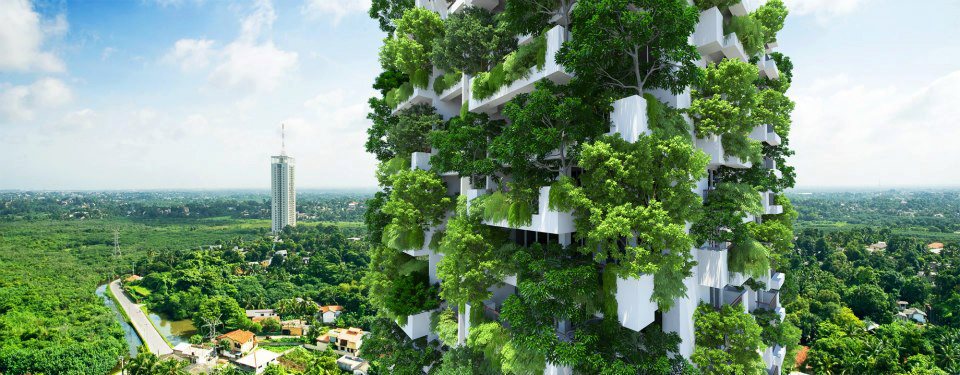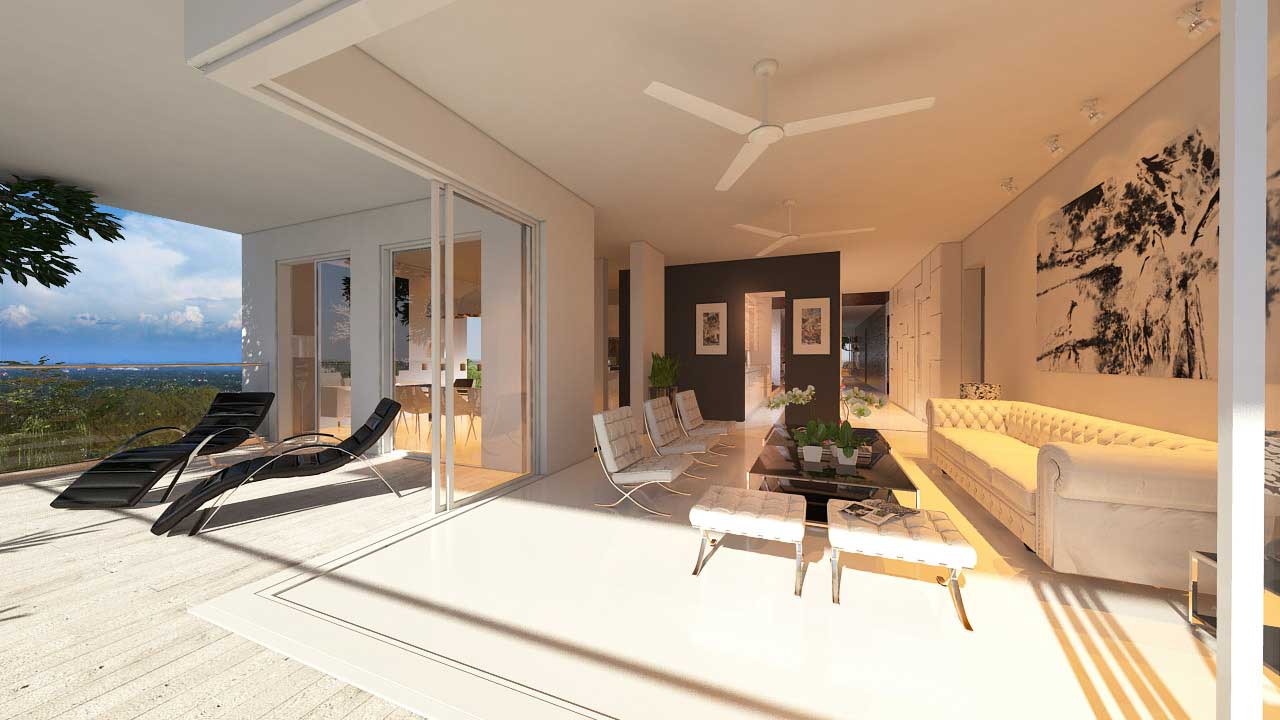When the 46-story Clearpoint Residences condo tower officially opens in late 2015, it will be the world's tallest vertical garden.
All 164 units in the building will come with a spacious garden terrace, complete with lush vegetation and a self-sustaining, automatic drop irrigation system. The goal: to give all residents a first-floor living experience.
Designed by Milroy Perera Associates and Maga Engineering, the tower will overlook Diyawanna Lake in Kotte, which is located about six miles from Sri Lanka's capital city of Colombo.
According to the development team, fruit trees—namely indigenous and endangered species of mango trees—will be planted on all balconies. The building's water will be recycled for use as flushing water and drip irrigation for the vertical garden. This approach will slash water consumption by more than 40%.
Site work began in January 2013, and foundation piling installation commenced in May.
(http://www.ctbuh.org/News/GlobalTallNews/tabid/4810/Article/1038/language/en-US/view.aspx)
(http://www.clearpointresidencies.com/)
Related Stories
| Dec 27, 2011
Suffolk Construction celebrates raising of Boston Tea Party Ships & Museum cupola
Topping off ceremony held on 238th Anniversary of Boston Tea Party.
| Dec 27, 2011
State of the data center 2011
Advances in technology, an increased reliance on the Internet and social media as well as an increased focus on energy management initiatives have had a significant impact on the data center world.
| Dec 27, 2011
USGBC’s Center for Green Schools releases Best of Green Schools 2011
Recipient schools and regions from across the nation - from K-12 to higher education - were recognized for a variety of sustainable, cost-cutting measures, including energy conservation, record numbers of LEED certified buildings and collaborative platforms and policies to green U.S. school infrastructure.
| Dec 21, 2011
DOE report details finance options for PV systems in schools
The report examines the two primary types of ownership models used to obtain PV installations for school administrators to use in selecting the best option for deploying solar technologies in their districts.
| Dec 21, 2011
AIA Chicago & AIA Chicago Foundation 2011 Dubin Family Young Architect Award announced
The Dubin Family Young Architect Award is bestowed annually and recognizes excellence in ability and exceptional contributions by a Chicago architect between the ages of 25 and 39.
| Dec 21, 2011
Few silver linings for construction in 2012
On the brighter side, nearly half of respondents (49.7%) said their firms were in at least “good” financial health, and four-fifths (80.2%) said their companies would at least hold steady in revenue in 2012.
| Dec 21, 2011
Hoboken Terminal restoration complete
Restoration of ferry slips, expanded service to benefit commuters.
| Dec 21, 2011
BBI key to Philly high-rise renovation
The 200,000 sf building was recently outfitted with a new HVAC system and a state-of-the-art window retrofitting system.
| Dec 20, 2011
Gluckman Mayner Architects releases design for Syracuse law building
The design reflects an organizational clarity and professional sophistication that anticipates the user experience of students, faculty, and visitors alike.
| Dec 20, 2011
Research identifies most expensive U.S. commercial real estate markets
New York City, Washington, D.C. and San Mateo, Calif., rank highest in rents.



























